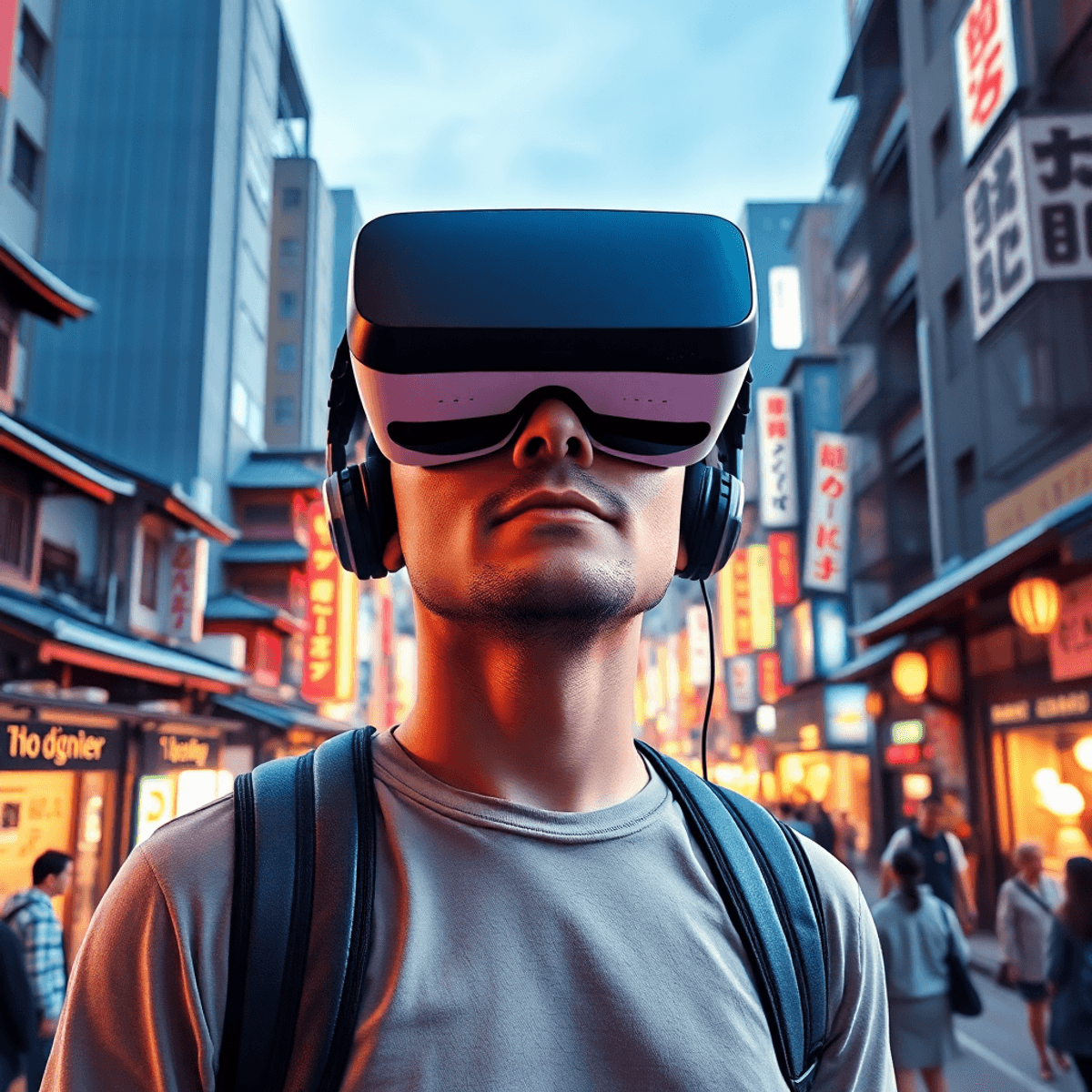
An upcoming exhibit at the Osaka Museum of Housing and Living is set to revolutionize your perception of history. Titled Osaka Momoyo, this exhibit offers an immersive VR experience designed by acclaimed director Jonathan Hagard, allowing visitors to step into Osaka’s past. With VR goggles on, you’ll find yourself at the bustling intersection of Sakai-suji and Hirano-dori, witnessing 400 years of Osaka’s history come alive before your eyes.
This isn’t just a nostalgic trip; it’s an opportunity to witness significant events that shaped the city firsthand. From the fierce Summer Siege of Osaka in 1615 to the relentless reconstruction efforts following devastating fires and air raids, and even the ongoing transformations of today—this exhibit promises to deliver an unforgettable experience.
Here’s what this article will explore:
If you’re seeking an interactive way to engage with history rather than simply observing it, this exhibit is tailored for you. It forms part of a broader movement in Japan where extraordinary VR attractions are increasingly gaining popularity. In addition to historical experiences such as Osaka Momoyo, visitors can also look forward to thrilling encounters with Monster Hunter at the forthcoming Kansai Expo 2025 or indulge in an exclusive Spy x Family themed VR coaster ride at Universal Studios Japan.
Experience the Osaka Momoyo VR adventure, powered by cutting-edge LBE VR technology, and immerse yourself in the year 1615 when the Summer Siege of Osaka transformed Japan’s political landscape. This isn’t just a boring history lesson — it’s an opportunity to witness one of the fiercest battles between two powerful forces: the Tokugawa shogunate and the Toyotomi clan.
With the help of VR animation, you’ll find yourself standing right where Sakai-suji and Hirano-dori intersect, with Osaka Castle’s imposing figure towering over the city. Surrounding you, samurai warriors engage in sword fights, battle cries reverberate through the air, and siege engines rumble ominously. The chaos feels incredibly real — it’s not just a background scene but an immersive experience that takes you deep into the turmoil that crushed Toyotomi Hideyori’s rebellion and solidified Tokugawa Ieyasu’s hold on power for more than two hundred years.
This crucial moment wasn’t solely about a castle or a fight; it marked a significant turning point that shaped Osaka’s identity as a city caught between destruction and rebirth. By witnessing history unfold firsthand through virtual reality (VR), you can better understand why this siege left an indelible impression on Osaka’s urban development and cultural memory.
Key Takeaway:
Step into the Osaka Momoyo VR experience and watch history rewind and fast-forward at the same time. After the chaos of the Summer Siege, Osaka’s story doesn’t end—it morphs into an epic saga of survival and relentless rebuilding.
The VR animation vividly portrays two of the most harrowing disasters in Osaka’s reconstruction history:
Watching these moments unfold in real time, you gain a visceral appreciation for how each catastrophe was met not with surrender but with a fierce determination to rebuild. Streets widened, buildings rose from ashes, and communities banded together—laying foundations for modern Osaka.
Key Takeaway: The VR journey reveals more than architecture; it reveals spirit. Osaka’s resilience shines through centuries of setbacks, reminding us that cities are living entities shaped by their people’s grit under pressure.
The Meiji Restoration wasn’t just a political revolution; it was a cultural earthquake that reshaped Osaka’s skyline and soul. The Osaka Momoyo VR experience drops you right at the intersection of Sakai-suji and Hirano-dori, where you can witness firsthand how Western influences in Japan started to blend with traditional Japanese architecture.
Picture this: sleek brick buildings with tall windows standing shoulder to shoulder with wooden machiya townhouses. Steam-powered factories hum in the background as trams clang along widened streets. This fusion of East and West symbolized a city eager to modernize without losing its identity.
Key architectural highlights include:
The VR animation, crafted by award-winning director Jonathan Hagard, captures these shifts not as static snapshots but as a living, breathing transformation. Watching the interplay of old and new structures evolve around you makes clear how this period laid the foundation for modern Osaka.
Understanding this era means appreciating the cultural exchange that defined Osaka’s identity — a city both proud of its past and hungry for innovation.
The Traditional Japanese Dress Museum experience offers a hands-on exploration of Japan’s textile heritage, featuring clothing that has played a significant role in shaping its culture and craftsmanship over the years. This museum goes beyond displaying beautiful kimonos on mannequins; it serves as a lively repository of social history intricately woven into fabric.
At the museum, visitors can expect to see:
Each clothing item on display tells stories about societal changes—how attire became a symbol of identity, class, and even political beliefs. The carefully curated collections at the museum highlight how textiles were not merely decorative elements; they served as means of communication in a society deeply attuned to symbolism.
By viewing these garments within their historical context, we gain insights into Japan’s ever-evolving cultural landscape. The artistry behind dyeing techniques, fabric weaving, and garment construction sheds light on the meticulous craftsmanship and aesthetic values that shaped everyday life.
This exhibit complements the virtual reality (VR) experience by connecting Osaka’s architectural transformations with the intimate details of personal clothing choices. Textile traditions offer a human perspective to understanding historical changes—reminding us that history encompasses not only buildings or conflicts but also the garments worn by individuals during those times.
The Osaka Momoyo exhibit will soon open at the Osaka Museum of Housing and Living, offering a virtual reality (VR) experience that takes you on a journey through 400 years of Osaka’s history along Sakai-suji and Hirano-dori. Directed by award-winning filmmaker Jonathan Hagard, the animation places you directly in significant events such as samurai battles and modern revitalization.
Exhibit admission fees:
Tips for your visit:
Are you ready to step back in time? Put on your VR goggles and get ready for an immersive experience like no other.

